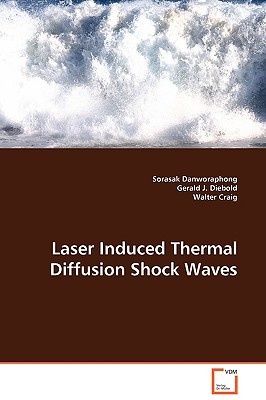
- We will send in 10–14 business days.
- Author: Sorasak Danworaphong
- Publisher: VDM Verlag
- Year: 2008
- Pages: 100
- ISBN-10: 3639094824
- ISBN-13: 9783639094824
- Format: 15.2 x 22.9 x 0.5 cm, minkšti viršeliai
- Language: English
- SAVE -10% with code: EXTRA
Reviews
Description
When two phase coherent laser beams are crossed at an angle, the electric fields of the beams produce a sinusoidal interference pattern. Partial absorption of the electric fields in a colloidal sample creates a sinusoidal temperature field. The temperature gradient then causes production of concentration gradient in the sample, known as the Ludwig-Soret effect or thermal diffusion. Solutions to nonlinear partial differential equations that describe the effect show that shock waves analogous to fluid shock waves are produced. A mathematical relation between the shock speed and the density fraction of one component, analogous to the well-known Rankine-Hugoniot equations, is derived. Self-diffraction and imaging experiments show shock-like behavior in colloidal systems governed by the thermal diffusion.
EXTRA 10 % discount with code: EXTRA
The promotion ends in 21d.01:52:54
The discount code is valid when purchasing from 10 €. Discounts do not stack.
- Author: Sorasak Danworaphong
- Publisher: VDM Verlag
- Year: 2008
- Pages: 100
- ISBN-10: 3639094824
- ISBN-13: 9783639094824
- Format: 15.2 x 22.9 x 0.5 cm, minkšti viršeliai
- Language: English English
When two phase coherent laser beams are crossed at an angle, the electric fields of the beams produce a sinusoidal interference pattern. Partial absorption of the electric fields in a colloidal sample creates a sinusoidal temperature field. The temperature gradient then causes production of concentration gradient in the sample, known as the Ludwig-Soret effect or thermal diffusion. Solutions to nonlinear partial differential equations that describe the effect show that shock waves analogous to fluid shock waves are produced. A mathematical relation between the shock speed and the density fraction of one component, analogous to the well-known Rankine-Hugoniot equations, is derived. Self-diffraction and imaging experiments show shock-like behavior in colloidal systems governed by the thermal diffusion.


Reviews